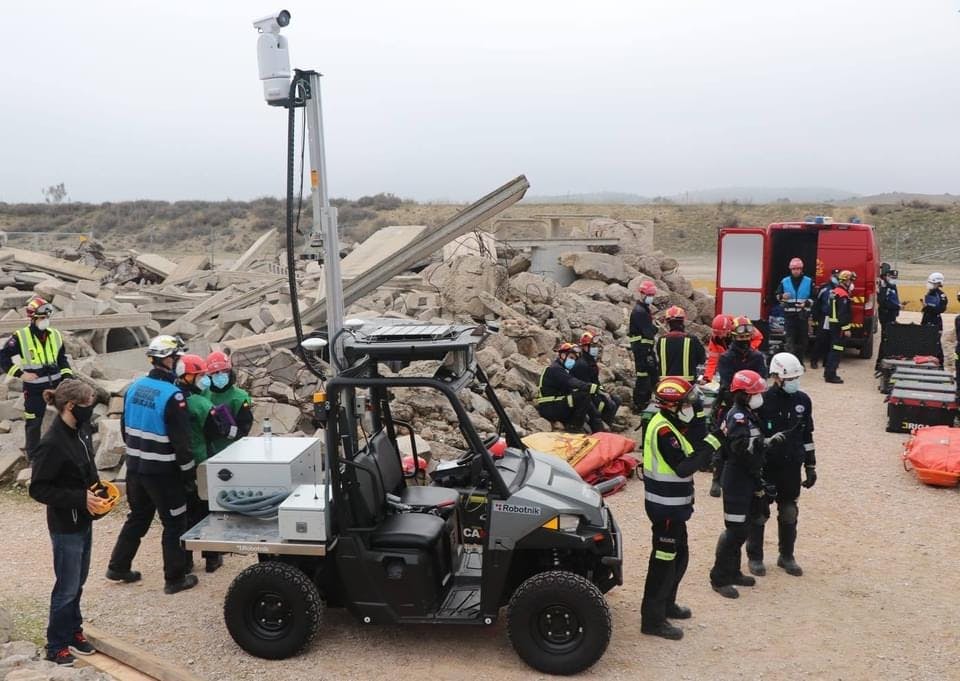
April 28, 2021
Chemical detectors, searching for the silent hazard
Threats and dangers come to humans in many different ways. Some of them can be perceived with the naked eye, making us aware of their existence and allowing us to take measures to protect ourselves. However, other risks and dangers are hidden, causing damage without being seen or perceived by us, which makes more difficult to take protective measures.

Both man-made hazards (anthropic) and natural hazards (earthquakes, floods or volcanic eruptions)[1] have unfortunately become part of our daily lives, and the work of first responders in emergency situations has become increasingly important.
Early detection, prompt identification, control and/or neutralization of hazardous substances and an accurate delimitation of the risk area are fundamental premises to optimize the effectiveness of first responders, thus avoiding loss of lives and mitigating damage to the environment. From this perspective, the use of technology aimed at first responders in emergency situations can play a fundamental role, helping to detect, reduce and mitigate the risks and dangers that may appear in a disaster.
The development of technological solutions to support first responders in emergency situations has given rise to a line of action within the European Union Research and Innovation Programme Horizon 2020, where a list of projects have been funded to support such technological development.
DEVELOPING TECHNOLOGY FOR EMERGENCIES
The INTREPID project is one of this project aimed at developing technology for first responders. It has been funded by the European Union within its H2020 Research and Innovation Programme. The Spanish School of Rescue and Detection with Dogs (ESDP) is part of the INTREPID consortium, whose main challenges are to develop technologies aimed at improving safety and efficiency in the detection of risks, guaranteeing a rapid, dynamic and safe response by the first intervention teams and, of course, by the canine teams (K9) as first responders.
One of the possible risks that can appear in a disaster and that is not always immediately perceptible are chemical risks. For this reason, chemical detectors are one of INTREPID's key strengths, and our work consists of supporting to make them as efficient as possible.
HOW CAN CHEMICAL DETECTORS HELP K9 TEAMS?
For a right assessment of hazards in the area, the following aspects are of great importance and can be faced using technology: On the one hand, the recognition and evaluation of the area. For this purpose, it is important to determine the chemical detectors, which must be used BEFORE the first responders´ entrance, both guides and dogs. Drones and robots, technologies that are also included in the INTREPID project and which, equipped with these detectors, will play an essential role in assessing the danger, securing the intervention area and thus guaranteeing the safety of the first responders, rescue dogs and victims.
On the other hand, after the recognition and evaluation of the area, the detectors worn by the first responders´ uniforms respond to different purposes which can be described as follows:
- The continuous assessment of the safety margins that need to be maintained while the rescue work is being carried out.
- Continuous control and correction, giving the possibility of warning of possible changes or the appearance of new leaks that could endanger the lives of the first responders involved.
- Detection of new substances that did not appear in previous readings and assessment.
SETTING A GOAL
In order to achieve what is called "Operational Hygiene"[2], risk elimination or reduction mesures must be established throughout the rescue manoeuvre.
We not only need to know what we are dealing with, but also some additional information as: the concentration of chemicals, the size of particles, the exposure time, the combination of pollutants or the detection of new hazards. The detection of these aspects using technological solutions is a significant challenge which provides considerable added value to the project's results.
Technology is setting a new horizon in disaster work, helping rescue teams to achieve better results in less time and increasing the safety and efficiency of first responders and rescue dogs.
Ana Aldea Reyes | Marta Burgos González | Susana Izquierdo Funcia
- Escuela Española de Salvamento y Detección con Perros / @ESDP_esp
- www. escuelasalvamento.org
[1]Salvago B. La amenaza riesgos, emergencias y catástrofes. La función de inteligencia en la gestión de emergencias y catástrofes, págs. 23-50. 2019.
[2] Baraza X, Castejón E, Guardino X. Higiene industrial. I- Introducción a la higiene industrial. Metodología de actuación. Higiene operativa.2016
Want access to exclusive INTREPID content? 💌 Subscribe to our newsletter! 💌




